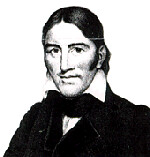Read Part 1, Part 2, and Part 3.
Everyone else is percolating right along, but it’s lunchtime, and the two middlers, Brown Bear Daughter (10) and Karate Kid (8), have only finished their Saxon math lesson and listened to me read the Bible aloud. We eat lunch, courtesy of Organizer Daughter, and then I herd the two slowpokes back to the table to do handwriting, easy grammar and dailygrams, copywork, multiplication practice worksheet, and a history workbook called Story of the USA.. A lot of our lesson plans come straight out of the Fourth Grade Sonlight curriculum, but I modify and cut and move stuff around as I feel necessary.
We’re reading two books aloud right now: Diary of an Early American Boy by Eric Sloane and Imprisoned in the Golden City by Dave and Neta Jackson. After we finish reading, Brown Bear Daughter and Karate Kid do a lesson in Cost Benefit, Jr. by Stephanie Herman, an economics curriculum I received as a gift for review purposes and liked so much that we’re using it in school this year. They still have to take turns reading their reader, a biography of Thomas Jefferson, and then we’re done–just in time for Karate Kid to get ready for karate, or Kuk Sool Won as it’s called at the place where he takes lessons. (It’s a Korean thing.) Karate Kid is a brown belt, and he says he’ll be a black belt before he’s twelve. Betsy Bee, Z-baby, and Brown Bear Daughter watch Cyberchase, a math show on PBS while I take Karate Kid to his lesson.
Dancer Daughter and Brown Bear Daughter both have dance tonight, and I still have to put supper (stew) on to cook sometime in between playing taxi. I sometimes think we’re way too busy, but if you have eight children and each one of them does only one outside activity, you still have a lot of taxi service to do. Dancer Daughter (almost 16) and Computer Guru Son (almost 18) are both taking driver’s ed from their dad in the evenings and on Saturdays and whenever they can work it in. That’s one class I gladly leave to Engineer Husband. He also tutors kids (his own) in math as needed, and he teaches science to Brown Bear Daughter and to Karate Kid in the evenings. They’re finishing up the Apologia Botany book right now, and my house is full of “plant experiments” that I must be careful not to disturb.
Our evening is a whirlwind of supper, dance, science, baths, and trying to go to bed at a decent hour. We don’t make it—again, but as Scarlett once said, “I’ll think about that tomorrow. Tomorrow is another day.”

